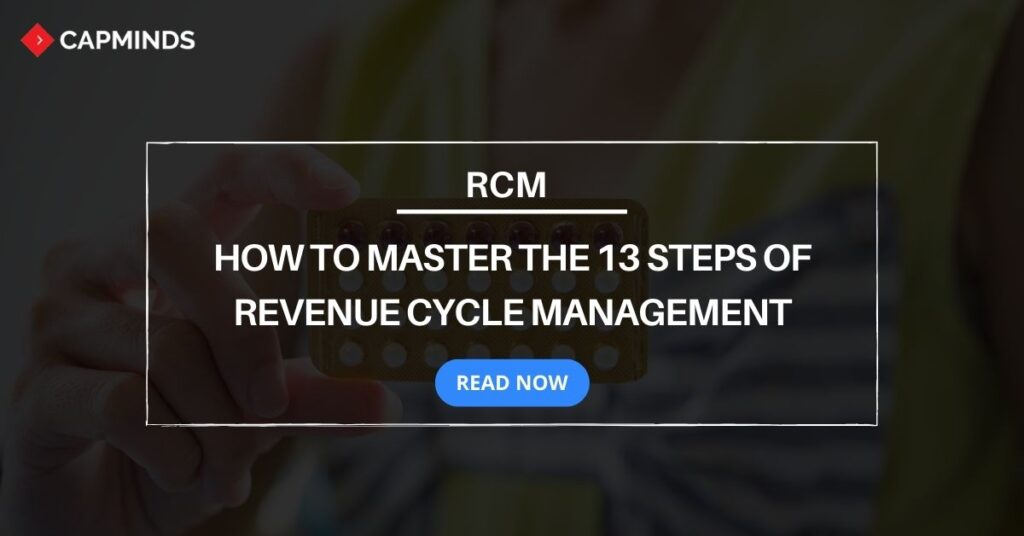How To Master the 13 Steps of Revenue Cycle Management
The healthcare revenue cycle can seem as complicated as the human circulatory system. But just as blood flows through our veins to keep us alive, money must flow through a healthcare organization to keep it thriving. Mastering revenue cycle management is critical for medical practices and hospitals to survive and care for their patients.
In 2022, revenue cycle management costs accounted for 3-7% of total healthcare expenses in the U.S. according to a Medical Group Management Association report. As healthcare administrative costs continue rising, medical practices must optimize their revenue cycles to prevent financial bleeding.
Let’s walk through the anatomy of the healthcare revenue cycle, going step-by-step from patient appointments to collecting bills. Follow these tips and metrics to keep your organization’s cash flow healthy.
The 13 Vital Steps to Revenue Cycle Success
1. Schedule Appointments to Fill the Schedule
Aim for 2-4 week look ahead scheduling to hit >90% capacity with new and follow-up appointments. No-shows can account for 12% + of capacity, so overbooking helps maximize providers’ time.
2. Verify Insurance Eligibility in Advance
Verify eligibility 48 hours before appointments to allow time for benefit checks. Identify expected out-of-pocket costs for patients early.
3. Register Patients Promptly
Check patients in 5-10 minutes early to complete all paperwork. Use electronic registration to ensure complete demographic and insurance information.
4. Document Each Service Provided
Detail medical necessity and coding for each service, test, and procedure during charting. Submit claims promptly with robust documentation.
5. Charge Accurately with Internal Audits
Set charges at the time of service with integrated EHR-billing software. Regular internal claim audits ensure compliance and full reimbursement.
6. Verify Patient Benefits and Collect Payments
Confirm coverage specifics for services delivered and collect copays/coinsurance before patients leave. Be clear about remaining balances.
7. File Claims Quickly and Correctly
Send clean claims within 1-2 days of service with accurate CPT and diagnosis codes. Correct any errors for fast acceptance and processing.
8. Follow Up Missing Payments
If payments are not received within expected timelines, follow up within 14 days to check the status. Resolve pending claims before they reach 30 days outstanding.
9. Work Denied Claims and Appeals
Don’t write off denied claims prematurely. Research reasons for the denial and appeal if appropriate within the deadline.
10. Pay Attention to Key Cash Flow Metrics
Track denial rates, days in A/R, bad debt expenses, and net collections as a percent of net patient revenue. Set goals for improvement.
11. Automate Payment Posting
Apply insurance payments to open balances automatically with posting software functionality.
12. Send Patient Bills for Balances
Bill patients accurately and promptly for remaining owed balances. Ensure bills are clear about payment timing and options.
13. Engage Patients on Self-Pay Plans
Offer reasonable payment plans to patients with self-pay balances. Follow up consistently on overdue payments.
The Keys to Unlocking Revenue Cycle Success
When revenue cycle management falters, patient care and financial stability suffer. Avoid haphazard billing processes or relying on manual workarounds. Embrace capable staff, advanced EHR billing software, and data-driven insights to strengthen your revenue cycle.
Patient collections will flow smoothly, care quality will improve, and your healthcare business will thrive well into the future.
Frequently Asked Questions
1. What are some common revenue cycle management pitfalls?
- Poor upfront verification of insurance eligibility and benefits
- Inaccurate medical coding and billing errors
- Lax follow-up of denied claims and pending payments
- Failure to offer financial assistance or payment plans
2. How can healthcare providers benchmark their revenue cycle performance?
Monitor key metrics like days in accounts receivable, denial rates, cost to collect, patient payment ratios vs. gross charges, and bad debt as a percentage of revenue. Compare to industry benchmarks.
3. What technologies most improve collections and cash flow?
Robust EHR-billing software integration provides seamless end-to-end workflow. Reporting dashboards spotlight successes and areas needing performance improvement. Automated patient engagement and self-service tools reduce bills going to bad debt.
Mastering something as complex as revenue cycle management takes knowledge, smart tools, and experience. While the healthcare industry outlook remains complicated, medical practices can control their financial fitness.
With sound revenue cycle operations, healthcare providers can keep focused on delivering excellent patient care while supporting a healthy organization.
Struggling With RCM?
Submit your problem/query here and CapMinds will resolve them for you!!!




